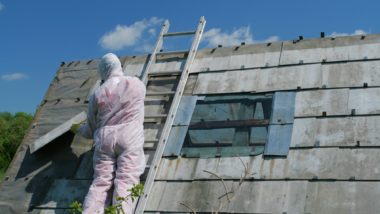Top Class Actions’s website and social media posts use affiliate links. If you make a purchase using such links, we may receive a commission, but it will not result in any additional charges to you. Please review our Affiliate Link Disclosure for more information.
Although it is uncommon today, one can still find asbestos used for many purposes, making asbestos-related illnessesa health hazard. There are also products and buildings manufactured years, even decades ago, that contain asbestos, and continue to present a health risk, either through direct or secondary exposure.
What Is Asbestos?
Asbestos is a blanket term referring to several different silicate minerals, known and used for thousands of years in fireproof applications. In centuries past, asbestos was used for pottery and fireproof fabrics. According to the website United Nations of Roma Victrix (UNRV), Ninth Century Holy Roman Emperor Charlemagne is said to have owned an asbestos tablecloth. In more recent times, asbestos was used extensively in building construction and industrial machinery and applications.
Asbestos falls into one of two main categories: chrysotile, or “serpentine,” which consists of relatively soft, curly fibers, and tremolite, a form made up of hard, needle-like fibers. Tremolite has been banned in most of the world today, although it can still be found in old buildings and machinery. Asbestos used for most applications today is of the chrysotile variety (also known as “white” asbestos).
How Great Is the Risk of Asbestos Illnesses?
Virtually everyone has been exposed to asbestos at some point, but relatively few people develop an asbestos-related disease. Those who do are typically people who work with asbestos directly, either by mining and processing it, or in industries that have used (or continue to use) asbestos.
Although asbestos may not pose much of a threat to consumers when it is whole and undisturbed, once the material begins to degrade or crumble, it can become hazardous to human health.
When asbestos or asbestos-containing products are disturbed, like during building renovations, they can release microscopic tiny asbestos fibers into the air. These fibers can then be inhaled, swallowed, or stuck on clothing. When inhaled or swallowed, these fibers can stay in the body for a long time, causing damage to the lungs and other parts of the body. Over time, these particles may settle in the lungs or mesothelium, where they can cause irritation and inflammation. This irritation may lead to scar tissue or cancer. If asbestos fibers become stuck on the clothing, they can be taken home where they can cause second-hand exposure.
Many spouses and children of people who work in fields that expose them to asbestos are exposed to asbestos in this way. While people who work with asbestos often wear protective equipment including masks, if they do not change or shower between leaving work and coming home, microscopic asbestos particles may stick to their clothing, shoes, skin, or hair. This is how people who believe they have never been in contact with asbestos may have unknowingly been exposed to the carcinogen. Workers who may come into contact with the material may want to take precautions to avoid spreading asbestos particles.
At-risk occupations include asbestos miners, asbestos millers, textile workers, shipbuilding workers, demolition workers, drywall removers, asbestos removers, firefighter, and mechanics. Some these occupations were historically at risk while others remain at risk due to remaining asbestos products.

That said, many who have contracted an asbestos disease have had a secondary exposure, or have used products contaminated with asbestos. It is not completely understood why some people develop an asbestos disease, even with minimal exposure, while others who have been around it extensively do not, although tobacco use is known to be an exacerbating factor.
What Are Common Asbestos Diseases?
Asbestosis, or inflammation of the air passages, is the most frequent of the diseases caused by asbestos exposure. Asbestosis symptoms may include shortness of breath, coughing, and permanent lung damage. Other non-malignant lung problems may include pleural plaques (problems with the membrane surrounding the lungs; may increase risk of lung cancer), pleural thickening, and benign pleural effusions (collections of fluid between the lung lining and chest cavity wall).
Asbestos lung cancer is a close second, which is due to DNA damage caused by chronic inflammation.
Mesothelioma is the most serious and dreaded of asbestos diseases. This is a cancer of the visceral lining, a layer of tissues that provide lubrication for the internal organs. It is caused by tremolite asbestos fibers, which literally drill through internal organs from the inside out. Fortunately, most asbestos used today does not include tremolite, though it still exists in old electric insulation and steam fittings. It is also allegedly a contaminant in talc, an ingredient in commercial body powder and many cosmetics.
What Else Is Asbestos Used For?
Asbestos can still be found in a number of common consumer products made today. EPA regulations limit the amount of asbestos to less than one percent, but it is still technically legal. In addition, older products from the last century that may still be in use, such as hair dryers, slow cookers, and building insulation may contain asbestos.
Although many new products are prohibited from containing asbestos, old products or buildings that contain the material are often not required to remove the substance. Many old office buildings, school buildings, or apartment buildings still contain asbestos used for ceiling or floor tiles, insulation, or other materials. As these buildings age and the materials degrade, they may pose a threat to workers, students, teachers, or residents. Unfortunately, it can be just as dangerous to remove the asbestos and release the particles into the air as it is to leave the material where it is.
The American Cancer Society also warns asbestos can also be found as an accidental contaminant in products such as talcum powder and fertilizer containing vermiculite.
Do YOU have a legal claim? Fill out the form on this page now for a free, immediate, and confidential case evaluation. The attorneys who work with Top Class Actions will contact you if you qualify to let you know if an individual asbestos lawsuit or asbestos class action lawsuit is best for you. [In general, asbestos mesothelioma lawsuits are filed individually by each plaintiff and are not class actions.] Hurry — statutes of limitations may apply.
ATTORNEY ADVERTISING
Top Class Actions is a Proud Member of the American Bar Association
LEGAL INFORMATION IS NOT LEGAL ADVICE
Top Class Actions Legal Statement
©2008 – 2024 Top Class Actions® LLC
Various Trademarks held by their respective owners
This website is not intended for viewing or usage by European Union citizens.
Get Help – It’s Free
Join a Free Asbestos Mesothelioma Class Action Lawsuit Investigation
If you or a loved one were exposed to asbestos and developed mesothelioma, lung cancer, or cancer in the lining of the lungs, abdomen or chest cavity, you may be able to take legal action against the companies responsible. Don’t delay – in most states the statute of limitations is two years to file an asbestos lawsuit after you’re diagnosed. Obtain a free and confidential case evaluation by filling out the form below.
An attorney will contact you if you qualify to discuss the details of your potential case at no charge to you.
PLEASE NOTE: If you want to participate in this investigation, it is imperative that you reply to the law firm if they call or email you. Failing to do so may result in you not getting signed up as a client or getting you dropped as a client.
Oops! We could not locate your form.












